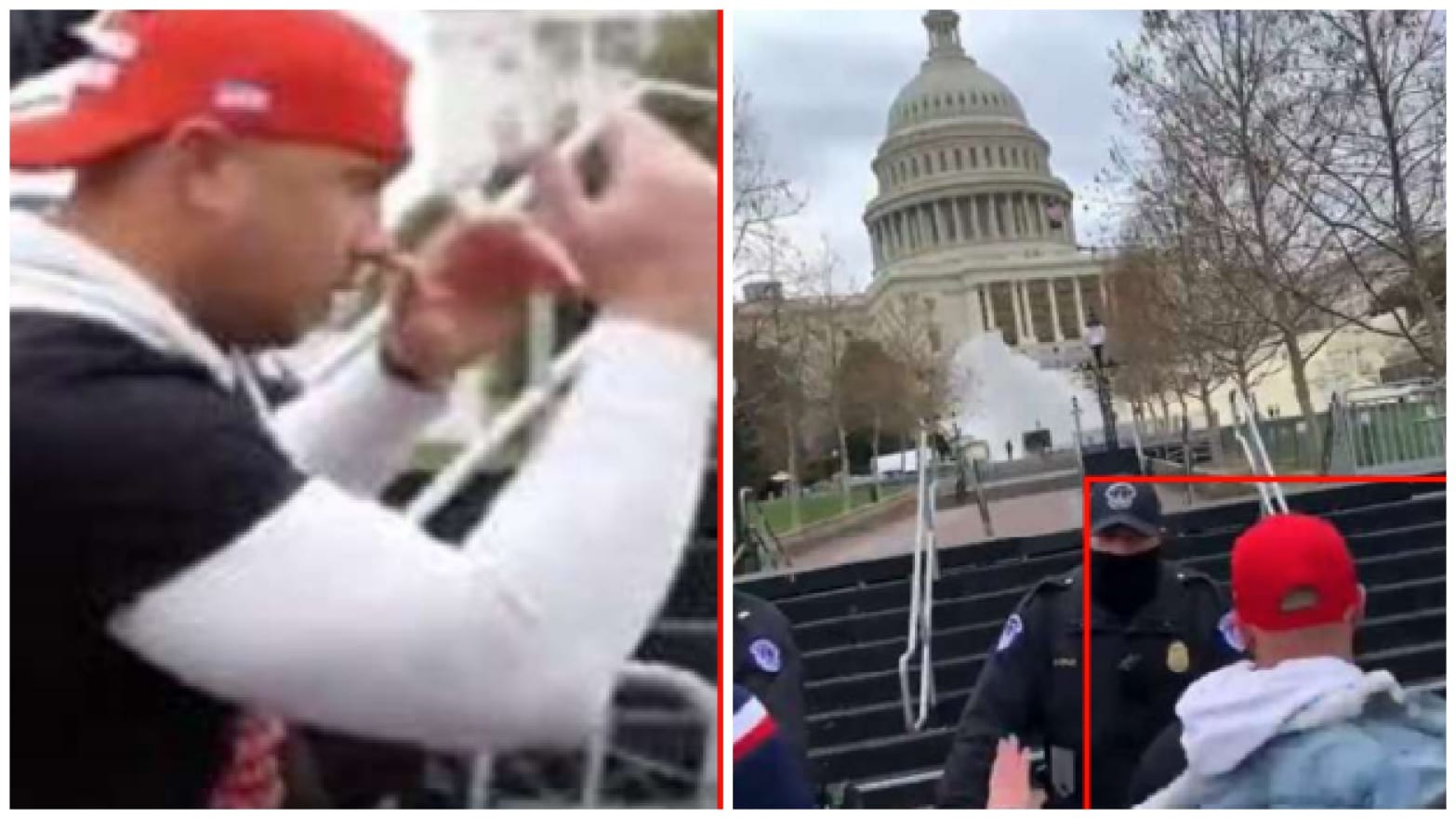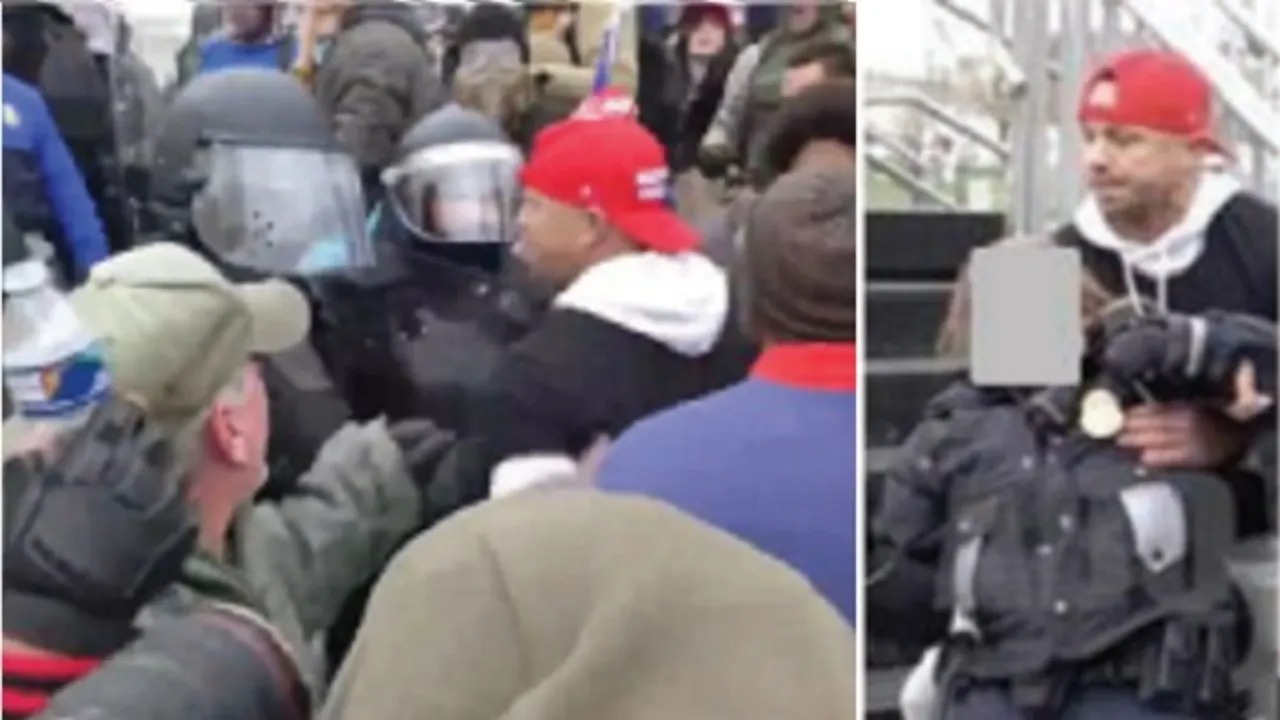The pivotal figure believed to have instigated the violent breach of Capitol grounds during the January 6 incident, Ryan Samsel, has been convicted of multiple felonies related to his role in the attack.
The verdict, issued by U.S. District Judge Jia Cobb, comes three months after a bench trial that involved Samsel and four co-defendants: James Grant, Stephen Randolph, Paul Johnson, and Jason Blythe.
The defendants were charged with participating in the “civil disorder” unleashed by the mob and assaulting Capitol Police Officer Caroline Edwards, who was temporarily incapacitated during the breach.

Ryan Samsel convicted of Multiple Felonies (Credits: The Daily Beast)
Samsel and his co-defendants, who arrived at the lightly guarded barricades around the Capitol before Donald Trump concluded his speech to supporters, were found guilty of playing a role in the chaos that unfolded and assaulting one of the police officers guarding the initial line.
The breach, which followed the toppling of the initial barricades by the defendants, allowed the mob to swell and overpower police lines, ultimately leading to the breach of the Capitol building.
While the convictions represent another significant outcome in the prosecution of high-profile January 6 cases, Judge Cobb delivered a mixed verdict by rejecting three charges against each defendant related to trespassing and disorderly conduct on the restricted grounds of the Capitol.
Cobb ruled that the Justice Department had failed to prove the defendants were aware of the presence of Vice President Mike Pence and his family during the melee.
The sentencing for the defendants is scheduled for June, and prosecutors are expected to seek prison terms spanning several years or more.
Ryan Samsel, a key figure in the January 6 violence, has been a focal point of interest for both prosecutors and congressional investigators.
Videos and surveillance footage captured Samsel approaching the barricades before 1 p.m. on January 6, and he was seen briefly conferring with Proud Boys leader Joe Biggs and Ray Epps, a moment that gained significance during the seditious conspiracy trial of Biggs and other Proud Boys leaders.
Samsel’s interactions with Biggs and Epps fueled baseless conspiracy theories suggesting Epps was a federal agent attempting to incite unrest at the Capitol.
Samsel initially claimed that Biggs encouraged him to attack the police, alleging that Biggs had a gun. However, he later retracted this version of events, leading to conflicting accounts and raising questions about the accuracy of his statements.
The conviction of Samsel and his co-defendants adds another layer to the legal repercussions stemming from the January 6 attack, highlighting the complexity and varied outcomes of the ongoing prosecutions.























